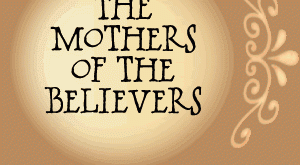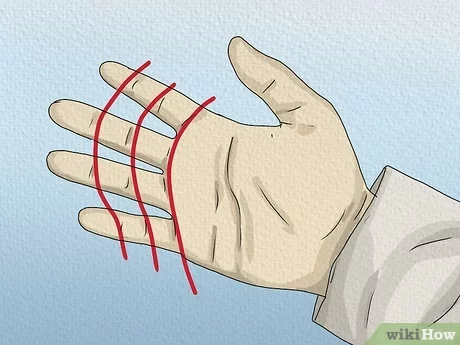 "A-l h-a-m-d-u l-i-l-l-a-h-i R-a-b-b il-`a-l-a-m-e-e-n." So began the recitation for Jumu`ah (the Friday Prayer). Every letter pronounced meticulously by the imam, self-consciously aware as he led the small congregation of about 20, that he is not a native Arabic speaker. The congregation was fully Chinese, mostly men over 50, but with a handful of youngsters in their early teens.
"A-l h-a-m-d-u l-i-l-l-a-h-i R-a-b-b il-`a-l-a-m-e-e-n." So began the recitation for Jumu`ah (the Friday Prayer). Every letter pronounced meticulously by the imam, self-consciously aware as he led the small congregation of about 20, that he is not a native Arabic speaker. The congregation was fully Chinese, mostly men over 50, but with a handful of youngsters in their early teens.
Qinjing Mosque—also known as Kylin (Unicorn), Shenyo, or Ashab Mosque—was originally built in 400 AH (1009 CE) during the Northern Song Dynasty. It is one of seven mosques that were built in the city of Quanzhou. This city, described as Zaytun by Marco Polo, was the most famous port city of the Eastern world, and the starting-point of the maritime Silk Route.
In the Direction of Qinjing Mosque
I have traveled to this part of China many times, but I never had the opportunity to explore the nearby Muslim heritage. Today, having finished a meeting early, I returned to the hotel, rented a taxi, and headed in the
direction of Qinjing Mosque in the hope of making it for Friday Prayers.
Arriving late at the mosque and certain I had missed Friday Prayers, I couldn’t help but notice the large Buddhist temple nearby. For centuries, Muslims and non-Muslims have lived here in peace with their neighbors, be they Arabs, Chinese, or other ethnicities. Later, Muslims and their descendants were commonly identified with surnames such as Pu, Guo, Ding, Xia, Li, Jin, Ma, Tie, Ge, Shan, Mi, Ha, Yang, Huang, and Su.
Expecting a mosque similar to the Nu-Jei Mosque in Beijing, I was saddened to discover that what lay before me were essentially ruins, the remnants of a community that once flourished.
The architecture is a blend of Chinese and Arab styles. I am led through a central courtyard where a few pillars still stand. The inscriptions on the front walls, including the direction of the qiblah, seemed to be verses of the Qur’an. To the side lay a well, dug when the mosque was originally built, and despite droughts, it has never dried up. For many centuries this well served as the primary source of water for ablution.
Excavation in recent decades brought up a series of tombstones, with inscriptions in both Arabic and Chinese. A few of them are displayed alongside the "museum." Sadly the museum was not much more than a collection of photos of individuals who have visited the mosque and some brief history, with little else in relation to the mosque or other Islamic artifacts.
To the side of the ruins I found a relatively new construction, large enough to fit perhaps 60 people. This served as the prayer hall—a far cry from the drawings in the museum of what the local community is hoping to build.
"As-salamu `alaykum"
After taking some photos I decided to make one last round of the mosque grounds to try to capture something different before leaving. On my way I met the imam of the mosque, whose English was as good as my Russian. My "as-salamu `alaykum" encouraged him to say "ana min China" (I am from China), signaling that I reply. I said, "Ana min Angleterre"—I immediately thought to myself, "dude, he isn’t French!" Of course at that moment I couldn’t think of England in Arabic but tried anyway, "Ana min England … United Kingdom … Great Britain." I came to conclude that conversation wasn’t going to be a highlight of this encounter.
No luck!!
Eventually I understood that Jumu`ah Prayers were to be held at 1 p.m. I wasn’t late, and I was welcome to stay.
Woohooo!
As much as I had wanted to use the water well dug initially with the original mosque, given that it was fenced off, I decided I would be better off not causing a stir and using the bathrooms for wudu’ (ablution). (They need a water boiler, the water was freezing!)
As the khutbah (sermon) progressed in Chinese, I managed to pick up a few words: tawheed (belief that God is One); kafir (disbeliever), mushrik (one who worships multiple gods). I also noticed the imam’s continuous pointing to his head and his heart. Although I had no clue what the sermon was about, I came up with the following on the basis of his signaling: God Almighty has blessed us all with both a heart and a mind. Use both the heart and mind to find the truth. If you use one and ignore the other, you will not find the correct balance.
Was that interpretation my subconscious telling me that what I need to do is balance the knowledge of my mind with the sentiments of my heart? Is this what we do when we do not understand something: try to find the things that are common to us and then give the things that we see and hear the value we think we recognize? May God have mercy and help us all find that balance.
The Graves of the Prophet's Companions
After leaving the mosque, my driver and I stopped for lunch and then made our way to a Muslim graveyard, one of many lining the city, with thousands upon thousands of Muslim graves.
On the foothills of Mount Lingshan are the tombs of two of the four companions that Prophet Muhammad sent eastwards to preach Islam.
Known as the "Holy Tombs," they house the companions Sa-Ke-Zu and Wu-Ko-Shun—their Chinese names, of course. The other two companions went to Guangzhou and Yangzhou.
Driving through the city of Quanzhou, as in many Chinese cities, one reaches a large archway with an Arabic inscription along the top. Passing through there is another archway to the left that leads to a large car park. Across the adjacent river is Lingshan Park, the funeral ground for these two companions, and a host of other individuals, some Muslims, some not, who were buried on that spot in later days.
While I asked God Almighty to forgive those who have gone before us and those who are to follow—the prescribed prayer when at a graveyard—I walked back to the car, contemplating how these two men must have traveled to the other side of the world in their time, a journey that we can today cover in 14 hours, but that would have taken them many months. They didn’t have the comfort of a BMW or that of a 5-star hotel. They came from a far-off land, settled in an alien land, learned the local language, and preached the simple truth of Islam.
How lucky were these two men!
Zheng He’s Tomb
Making our way out of the city, we headed in the direction of Zheng He’s tomb. This famous Chinese admiral also happened to be a Muslim. His tomb is off a side road, past a number of factories, nestled in a hillside about 20 minutes from Longshan Park.
Upon approach, a unique archway led to a magnificent tree-lined, unevenly paved passage, which after some 500 yards ended in a series of steps leading to the tomb. Climbing the stairs, I reached the tomb, had a look around, said a short prayer, and made my way back.
This man is one of the most famous men of Chinese history: a Muslim leader of his time, a traveler whose trips dwarf those of Columbus, a man whose ships were easily four times the size of Columbus’s and whose mission was to set out into the world, showing the world the strength of the Ming Dynasty.
Having achieved so much, in the end, like any of us, he died.
His tomb, in need of desperate repair, is now falling apart, lodged away on the side of a hill, all but forgotten.
A Discovery for All
Back at the hotel I showed my photos of the mosque, the graveyard, and the tomb to some Chinese friends to help me translate the inscriptions, commentaries, and plaques I had found at these locations.
We managed to decipher over a period of two-and-a-half hours the various inscriptions, adding significantly more value to the photos and my understanding of the history. The notes to them follow:
The Qinjing Mosque is recognized as one of the top cultural sites and is thus protected by the Cultural Ministry.
An inscription on the Qinjinag Mosque wall is a peace treaty between two kings, the big king acknowledging that the companions of Muhammad (and the Muslims) had brought with them knowledge of Islam, and that Islam in itself has much to contribute to the Chinese people. The small king, the representative of the Muslims, was obliged to respect the big king. As long as that mutual relationship of trust, friendship, and honor was in place, the big king would not attack or harm the small king and his people.
Zheng He was not buried alone, but with his wife, Guo.
Once upon a time, the city of Quanzhou was of central importance in global economics, a flourishing multi-cultural, multi-faith center, a city of great history. Today like most of China, much of the past is being brushed aside at the expense of rapid growth and development.
It transpired that my "translation team" themselves knew very little about Islam, or the history of Quanzhou and its famous old mosque, or the old multi-faith communities in that region. What started as a short adventure for me became a beautiful discovery for us all.
In the history of the world there is a lesson for us all. Big or small, we will all die and be brought before our Creator. I pray that we all pass the tests of life in our own best capacities and that on that day when we stand before our Creator, we will all do so smiling, as God Almighty says:
[The early immigrants [those who migrated to Madinah when persecuted by the Quraish: an Arab people of which Muhammad was a member and which from the 5th century was distinguished by a religious preeminence associated with its hereditary provision of the pre-Islamic custodians of the Kaaba at Mecca The Quraysh was an Arab tribal confederation that historically inhabited and controlled the city of Mecca and its Ka'aba. In the late 6th-century More in early Islam] and the helpers [those who helped the immigrants] and those who followed them up with beneficence, Allah is well pleased with them, and they are well pleased with Allah.] (At-Tawbah 9:100)
Source : http://www.onislam.net
Post Disclaimer | Support Us
Support Us
The sailanmuslim.com web site entirely supported by individual donors and well wishers. If you regularly visit this site and wish to show your appreciation, or if you wish to see further development of sailanmuslim.com, please donate us
IMPORTANT : All content hosted on sailanmuslim.com is solely for non-commercial purposes and with the permission of original copyright holders. Any other use of the hosted content, such as for financial gain, requires express approval from the copyright owners.
 Sri lanka Muslims Web Portal Sri Lanka Muslims News Center
Sri lanka Muslims Web Portal Sri Lanka Muslims News Center
 Donate
Donate


